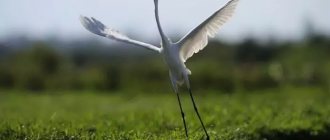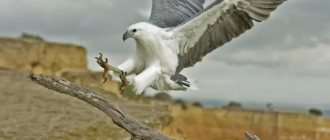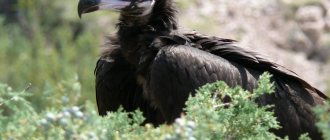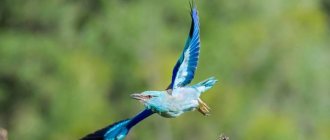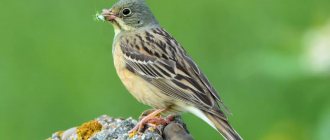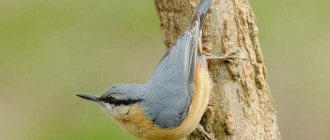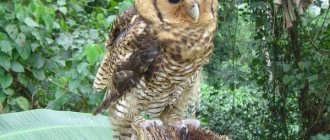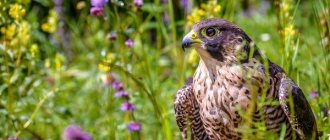Description and features
The stilt walker got its name because of the elongated legs on which it walks unsteadily along the ground, as if on stilts. The length of the legs is 18-20 cm, considering that the body length is 33-40 cm. In addition, they are red or bright pink. You can jokingly say that this bird is “in pink leggings.”
Further special features include a straight, long and black beak. Of the total body size, one sixth is the beak, approximately 6-7 cm. It weighs about 200 g, almost like a pigeon. Our hero's coloring is classic black and white. The head, neck, front part, bottom and a small area above the tail are white, elegant.
The wings and back, with a transition to the sides, are contrasting black. Moreover, in adult females the black color has a green tint, and in males it has a hint of cinnamon. Unlike its relatives, the avocets, it has a straight beak, rather than curved upward, longer legs, but a shorter neck.
The hind toe is reduced, the paw looks three-toed. There is a small membrane between the second and third fingers. The wings are narrow, long and sharp at the ends. The wingspan is 67-83 cm. The stilt in the photo resembles a miniature stork, it is beautiful, elegant and is usually captured in the water, like that one. He is beautifully reflected in it, and it is immediately clear that the water element is his home. When folded, the wings flow smoothly into the tail.
They are white on the inside. In spring and summer, the feathers on the white head of an adult male become very dark, and a black yarmulke appears on the back of the head. Then he looks like a cardinal. The female has duller plumage. In young birds, all dark areas are lighter than in adults.
LIFESTYLE
Stilts live in small colonies of 20-100 individuals. They prefer quiet backwaters and avoid the sea coast with high tides.
In swamps, sea coasts and salt marshes, stilts can withstand strong winds and high temperatures, as they find quiet shelters here. These birds can be found along the banks of artificial reservoirs - stocked ponds and water treatment facilities. They avoid close communication with a person, therefore, when they see him from afar, they quickly fly away. Stilt walkers move with long, careful steps or running. On its long, thin legs, the bird easily walks on water, but when walking on land, such a device creates certain difficulties. The legs of the stilt are three-toed; there is a small membrane between the bases of the middle and outer toes. Birds can swim, and if necessary, they can dive.
In flight, the stilt often flaps its wings, using its almost twenty-centimeter legs as a rudder. Young birds rarely move far from the shore, since they do not yet know how to swim. Adult stilts guard their nest very jealously, while they make barking sounds and pretend to be wounded.
Kinds
The genus Stilts includes 5 species of birds living in central Europe, southern Africa, Australia, New Zealand and America. The most famous of them are common, black and striped stilts.
The Australian striped stilt is found only in Australia. Very similar to a regular one, only the legs are a little shorter. He also has swimming membranes between all his fingers. There is one difference in plumage with the first one; below the neck there is a transverse dark spot that intersects the white chest with a stripe. Because of this, it is called striped. It is considered an intermediate specimen between the stilt and the avocet.
The black stilt stands out among its relatives in that it is black in color and lives only in New Zealand. His wings and back have a green tint. The legs are slightly shorter and the beak is longer than the normal one. Only young birds can have white islands in their plumage.
As they grow up, they turn completely black. There are no more than 100 individuals of this bird left in nature, which is why it is endangered. The cause of this disaster was largely human activity. He expanded his territories for agriculture, built dams, and there are always many predators near people - cats, rats and hedgehogs. All this led to the extinction of the black stilt.
Northern stilt , sicklebill, common, Australian, American, Andean avocet - all of them can be called very close relatives of our stilt sandpiper. They are from the avocet family of the order Plovers. These are aquatic and semi-aquatic birds, distributed throughout the world.
They differ in morphology, behavior, and habitat. There are only three common features - elongated legs and beak, and also life near water. Distant, but still their relatives can be considered snipes, lapwings, sea gulls, Arctic terns, sandpipers, skuas and many other birds living near the water.
Lifestyle and habitat
These creatures are represented quite widely throughout the land where there are bodies of water. They populated all continents except Antarctica. They are not found only in northern latitudes, in the Arctic and in dry regions. The stilt lives in open bodies of water, both fresh and salt water.
It can be seen in a bay by the sea, in the coastal part of a lake, near a river bank and even in a swamp. The main territory of residence of the common stilt is Europe, its central part, closer to the south. The Caspian Sea, the Black Sea, the steppe zone of the Southern Urals and Western Siberia are his favorite places in Russia.
Only waders living in temperate climates fly away for the winter. They go to Africa and southern Asia. Southern individuals are not migratory birds. This bird's voice is sharp and unexpected, similar to the barking of a small dog.
The stilt is screaming , but it seems that a puppy is yapping nearby. They live both in separate pairs and in colonies, in which there are up to several dozen pairs. They can often be seen alongside other waders, gulls and terns.
Birds live on the water throughout spring, summer and early autumn. They can withstand heat, cold winds and bad weather. If the wind blows too strongly from the water, they find shelter. They can often be seen near bodies of water created by humans.
However, when they see a person, they quickly fly away. In flight, they use their long legs as rudder. They walk in a peculiar way, taking long steps, leaning on their entire paw. Large traces of a three-toed limb remain in the sand after them.
Spreading
On the territory of Russia, stilts nest in the Ciscaucasia, on the Don, in the Caspian region, in Transbaikalia and in Primorye. Outside our country, stilts are found in southern Europe, China, India and Central Africa.
Depending on specific conditions, populations of stilts can be migratory, nomadic, or sedentary. Our stilts are migratory birds and winter in Southeast Asia and Africa. The favorite habitats of the stilt are low banks of rivers and lakes, both fresh and salt, with sparse grassy vegetation. Willingly settles in flooded meadows. Avoids areas with high tides, as brood nests often die.
Nutrition
On land he behaves somewhat clumsily, his famous legs hinder him. In the water, he walks freely in search of food. Moreover, it climbs deeper than many other birds. That's why he has more food. In addition, the bird can swim and dive. He is able to walk for hours up to his belly in water, collecting everything edible that comes his way.
It feeds mainly on larvae and insects. Stilt Sandpipers occupy overgrown marshes and check all areas after low tides in search of mollusks and crustaceans. They do not disdain green duckweed and other aquatic plants. Closer to the shore, they like to dig in the mud, selecting worms and tadpoles. They hunt little on land because it is not comfortable for them.
The moment of the hunt itself is interesting. Here he is walking, raising his legs high, carefully peering into the surface of the water. Suddenly a dragonfly flies past, very close to the surface. With a sharp movement, the bird throws its head slightly forward with its open beak and slams it shut like a trap. Sometimes it will even jump up for prey or dive, depending on where its target is. At this moment, only part of the back and tail are visible from the outside.
Activity
Stilts are diurnal and spend most of the day wading through shallow waters in search of food.
On soft coastal soil, the stilt leaves very distinctive tracks - one of the largest among waders. And his gait is also unusual - he takes very long steps - up to 25 cm and when walking he does not rely on his entire foot, but only on his toes.
Being closely associated with water, stilts can swim quite well (although adult birds rarely do this, while chicks swim willingly) and even dive.
Reproduction and lifespan
Puberty occurs at the age of 2 years. Usually, when they arrive from wintering, they split into pairs and then stay together for several years. During the courtship period, females are more active; they choose the male. Having shown signs of attention and completing the mating process, they begin to make a home for their future offspring. The nesting period is April-June, once a year.
If a stilt makes a nest on a dry bank, it is just a hole not far from the water. At best, he covers it a little with dry grass. But if the settlement is in a swampy place, these birds erect a real architectural structure. First, they build a foundation from small pebbles, then make bowl-shaped walls from small sticks, twigs and grass.
The result is a structure about 6-8 cm high on a stone base. The inside of the nest is lined with soft grass, moss or hay. The clutch usually contains 4 eggs of a remarkable appearance. The shell itself may be slightly greenish or smoky gray, but it is covered with numerous small specks and swirls of terracotta and chocolate shades.
It looks like some kind of antique item. The egg is 4-4.5 cm in size, slightly oblong in shape, and has distinct sharp and blunt ends. In the nest, the eggs lie with the sharp end toward the center of the clutch, and the blunt end outward. The clutch is laid in May, the brood appears in June, the incubation time is about 25 days.
During the entire incubation period they replace each other's eggs. Moreover, when one parent is sitting, the other brings him food. Hatched chicks become independent at the age of 1 month. In the nest they are carefully fed, bringing food to the little ones. Throughout adolescence, they are led by both parents. To summarize, let's say that the stilt bird is a very caring and faithful bird.
The plumage of young birds does not have black tones; there are softer brown shades. They stay close to the shore because they don’t know how to swim yet. Their food is insects and larvae. With age, the plumage becomes slightly coarser and acquires contrast. They live a long time, in captivity for about 12 years. In nature, many factors influence life expectancy.
In tropical areas the population is safe. Its numbers are growing in the Apennines, but in India, New Zealand, and Russia they are not increasing. The reduction in the number of individuals is influenced by many reasons - irrigation construction, intensive livestock grazing.
Many nests die in stocked ponds and rice paddies due to forced fluctuations in water levels. People often set up tourist camps near natural nesting sites. Crows fly in and destroy the nests of small waders.
Vocal, conspicuous, selflessly attached to the nest, the stilt is very vulnerable to poachers and predators. Population growth is very insignificant, sometimes going negative. It happens that after the destruction of the first clutch, they make a second one during the season, which is not typical for these birds. But they are desperately fighting for survival. They urgently need protection from humans.
This raises the question: is the stilt tree in the Red Book or not ? It is included in the list of protected animals both in the Red Book of Russia and in the annex of the Bonn Convention. It is protected in many nature reserves and sanctuaries in Russia. The task of limiting livestock grazing in areas of mass colonies during the breeding season is currently being solved. There is active promotion of stilt protection among the local population
The story of life at the zoo
In our zoo, stilts live in the internal enclosures of the Bird House. As in nature, they live peacefully with other birds kept in the same enclosures. The number of stilts has changed over the years, and now there are only 2 of them. Stilts nested successfully in the zoo several times.
The food of stilts in captivity consists of a combination of plant and animal feed in the amount of 216 g per day, with the share of plant feed being 38 g and the share of animal feed being 175 g.
Himantopus himantopus (Linnaeus, 1758) Class Birds - Aves Order Charadriiformes - Charadriiformes Family Avocets - Recurvirostridae Category and status: V - vulnerable species in the territory. Red Book of the Russian Federation: 3 - rare, sporadically widespread species on the periphery of its range. Annex 2 of the Bonn Convention; Application of bilateral agreements concluded by Russia with the Republic of Korea and India on the protection of migratory birds.
Description of the adult stage and its differences from related species
The stilt is a bird the size of a pigeon.
The coloring is contrasting: the head and body are white (in males the crown and back of the neck with a blurred black hood), the wings and the front of the back are black. The legs are red, disproportionately long, and in flight protrude far beyond the tail. The beak is awl-shaped, straight, black. It differs from the avocet in its straight beak and red legs. It differs well from other waders in terms of structure and coloration. Information about biology and ecology
The stilt nests on the open muddy banks of brackish and fresh water bodies of steppe and desert zones, sometimes in grassy swamps, salt marshes, in river and lake valleys, etc. It willingly populates rice paddies, fish ponds, settling basins and other artificial bodies of water
It nests in dense colonies, often together with other species of waders and terns. The clutch starts from the beginning of May and consists of 3-4 brownish-olive eggs with black-brown spots. It feeds in shallow water, on mud flats. It feeds on aquatic insects, mollusks, and crustaceans. Distribution and occurrence
The stilt nests along the southern outskirts of Russia: in the Ciscaucasia and the Caspian lowland to the north to the Middle Don, the south of the Saratov and Orenburg regions.
Outside Russia, the range includes a number of countries in Europe and Asia. In the Belgorod region, it is recorded in the Belgorod, Valuysky, Rovensky and Shebekinsky districts. The latest find dates back to 2003. Limiting factors
Intensive grazing in colonial nesting areas.
Death of nests in fish ponds due to technological fluctuations in water level. Frequent visits to colonies by people. Necessary protection measures
Limitation of livestock grazing during the breeding season of birds in places of mass colonial nesting.
Fencing colonies along the banks of reservoirs. Promotion of stilt protection among the population. Protection measures taken
The species is protected on the territory of the Rovensky PP.
Information sources
.
The stilt has such unusual long pink legs that the bird is recognized not only by specialists, but also by simply bird lovers.
The body of the stilt, 35-40 cm long, is covered with white feathers, the wings are painted black and their ends protrude far beyond the tail line. A black cap adorns the bird’s head, but it looks different in males and females; in females, the color of the feathers on the head looks lighter. The bird's wingspan is 71-75 cm. Females are smaller than males.
Of all the waders, the stilt has the longest legs, and this is no coincidence; the bird has to wander through shallow water, looking for food with the help of a thin black beak.
This species of waders is common in the Caspian region, Transbaikalia, Primorye and the Don. The bird can be seen slowly wandering through the shallow waters of brackish lakes and estuaries. The long legs of the stilt are an important adaptation that allows them to move quite a long distance from the shore in search of food.
The stilt feeds in a rather peculiar way. In search of food, the bird lowers its head and neck so deep into the water that only its shoulders and tail remain visible on the surface. With its long beak it looks for caddisfly larvae, small mollusks, water bugs, bloodworms, and amphipods. It does not collect insects on land, because all adaptations in search of food are related to the aquatic habitat.
On the sand of the coastal zone of the reservoir, the stilt leaves peculiar traces by which its presence can be easily detected. Firstly, they are quite large, and secondly, the bird’s paws are three-toed, more than 6 cm in size, the fingers are thin and long, and between the 3rd and 4th fingers there is a short membrane.
The bird walks interestingly, takes long steps, about 25 cm, and rests not on the entire foot, but on the toes, and leaves simply prints in the sand of the toes, as if unrelated to each other. Also, when traveling along the coast, the stilt loses its narrow and long flight feathers, by which it is easily identified as a species.
During nesting, birds form small colonies; nests are located near the water on sand spits, sometimes very close to other birds. The sandpiper drags the remains of plants, branches, stems into a small hole and lays 3-4 eggs measuring 30 - 40 mm. Puff feathers appear in June; young birds retain their dirty-brown plumage until their autumn departure, but grow quickly, reaching a weight of 180 to 220 g.
Taxonomic affiliation:
Class - Birds (Aves), series - Charadriiformes, family - Avocets (Recurvirostridae). The only species of the genus in Ukraine is represented by a nominative subspecies.
Conservation status of the species:
Vulnerable.
Range of the species and its distribution in Ukraine:
Covers the southern part of Europe, southern. Asia, Africa (South Sahara), Australia, South America, South. North America. In Ukraine, it nests near the Black and Azov Seas: along river deltas and estuaries. Mosaic settlements are found in Volyn, Kharkov, Donetsk, Lugansk regions, and the steppe part of Crimea.
Number and reasons for its change
About 8.5-10 thousand individuals nest on the territory of Ukraine, and 3.5-3.6 thousand pairs nest on Sivash.
Reasons for the change in numbers:
grazing of livestock and development of recreation in nesting areas, sharp fluctuations in water levels in reservoirs, increase in the number of enemies (rook, gray crow, fox, raccoon dog, stray dogs), degradation of feeding and nesting biotopes due to human activity, disturbance factor during nesting , creation of ponds in place of food biotopes, chemical pollution of the environment.
Features of biology and scientific significance:
Migrant. Spring migration in April-May. Inhabits sea coasts, coastal islands, half-submerged islands, river valleys, hummocky swamps, shallow fresh and brackish lakes, settling ponds, and fish farms. It nests at the water's edge or at a distance of up to 100 m deep into the reservoir, in separate pairs and colonies, sometimes together with terns. There are 4 eggs in a full clutch. The male and female incubate (22-24 days). The chicks begin to fly on their wings at 30-35 days. Autumn migration from late July to late August. It feeds mainly on insects and their larvae.
Morphological characteristics:
Body length - 35-40 cm, wingspan - 67-83 cm, weight - 150-190 g. In summer, the top of the head and the back of the neck are black or white in an adult, the back and wings are black with a tint, the rest of the plumage is white, the beak is black, legs red, in winter the crown and back of the neck are gray. In the young, the dark parts of the plumage are brownish-gray, the feathers have a light border, and the tips of the secondaries are white.
Population conservation regime and protection measures:
It is protected by the Bonn (Appendix II) and (Appendix II) conventions, the AEWA agreement, and is listed in the Red Book (1994). Protected in the Danube Nature Reserve, Crimean Nature Reserve (Swan Islands), Sivashsky NNP, Tiligulsky RLP in some reserves. Nesting settlements near the Sasyk reservoir, Lebedinskaya Spit and in certain places of Crimea should be taken under protection; grazing of livestock should be limited in the Meotida RLP and the appearance of people in nesting areas should be prohibited. It is necessary to create seasonal ornithological reserves during the nesting period and conduct extensive educational events.
Reproduction and breeding in specially created conditions:
No information.
Economic and commercial significance:
No information.
The stilt bird has long pink legs, which distinguish it very much from all other species of birds.
Its body is approximately 40 cm long and is completely covered with white feathers. The wings are dark in color and they extend beyond the line of the tail.
On the head of a stilt bird
has a black color in the form of a small cap. In males and females this color is slightly different from each other, since in females it is lighter. The wingspan becomes approximately 75 cm. And the females are also smaller in size than the males.
Interesting Facts
- Stilt walkers are responsible and selfless parents. Seeing the proximity of the predator to the nest, one of the birds takes off and tries to take the enemy with it. At the same time, they often pretend that they are wounded and cannot take off. Usually the uninvited guest rushes for easy prey, moving away from the nest to a safe distance for the chicks. And the cunning stilt flies up and returns.
- In hot countries, the bird has to cool the hatched eggs. Before sitting on the clutch, the female wets her chest and abdomen in water.
- If we take the ratio between the length of the legs and the body, the stilt ranks second in this category after the flamingo.
- A bird sitting on a clutch involuntarily “does yoga.” Her long legs are set back as far as possible and bent at an angle. She is forced to remain in this position for a long time.
- Its plumage is so clear that in clear water its reflection can be mistaken for a second bird. Mikhail Prishvin has such a story - “Reflection”. There, the hunting dog got confused about which of the two stilt waders to choose. So she plopped into the water behind the reflection.
